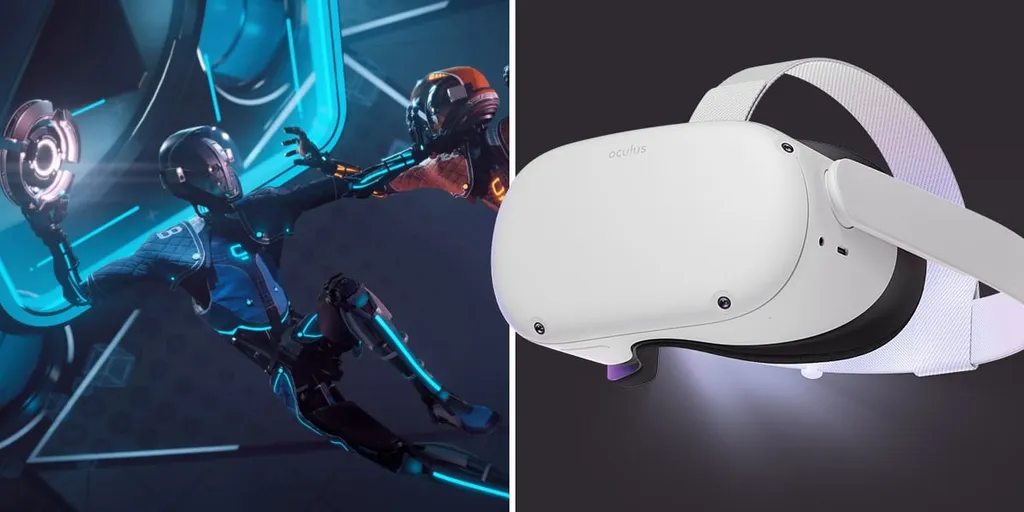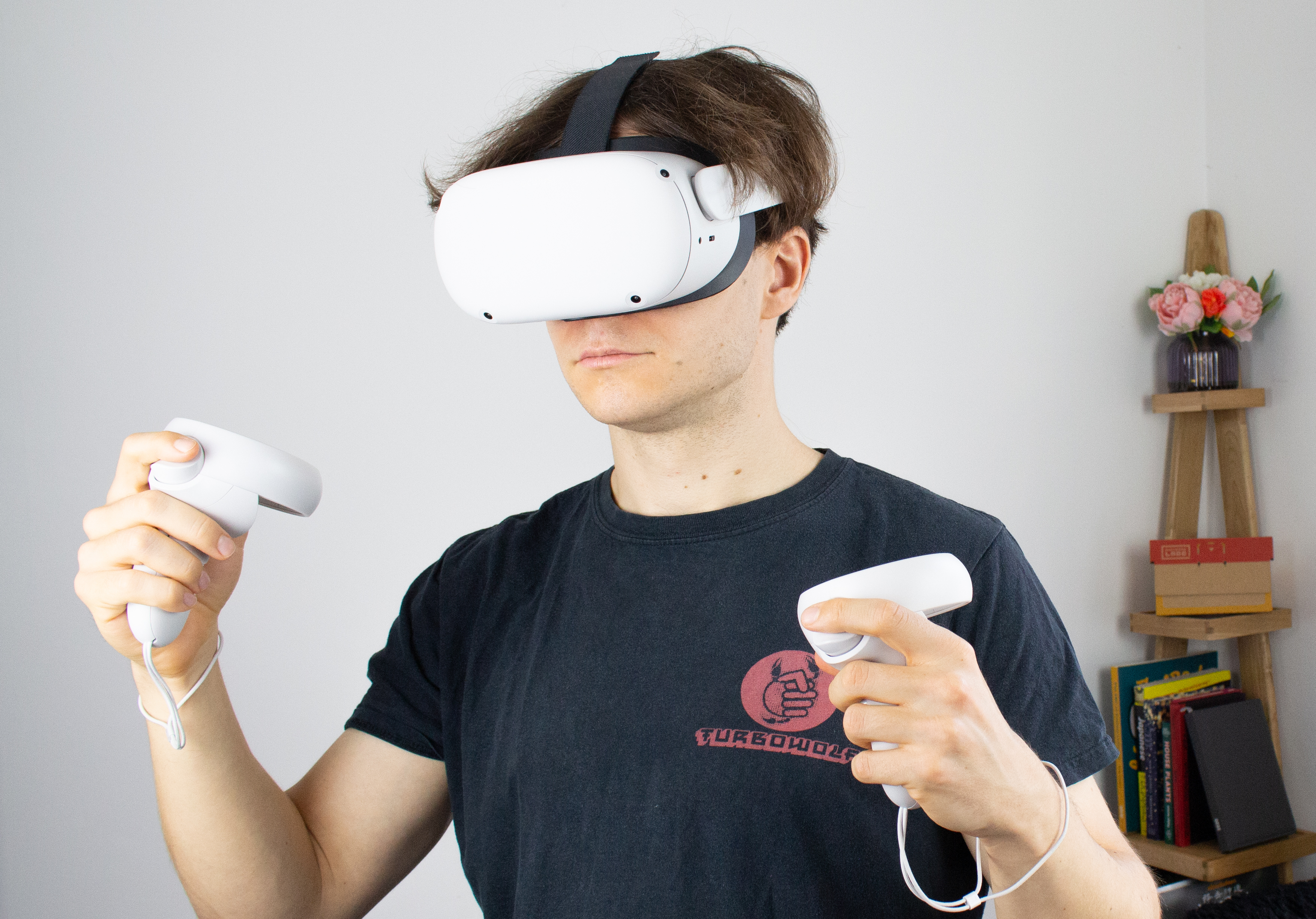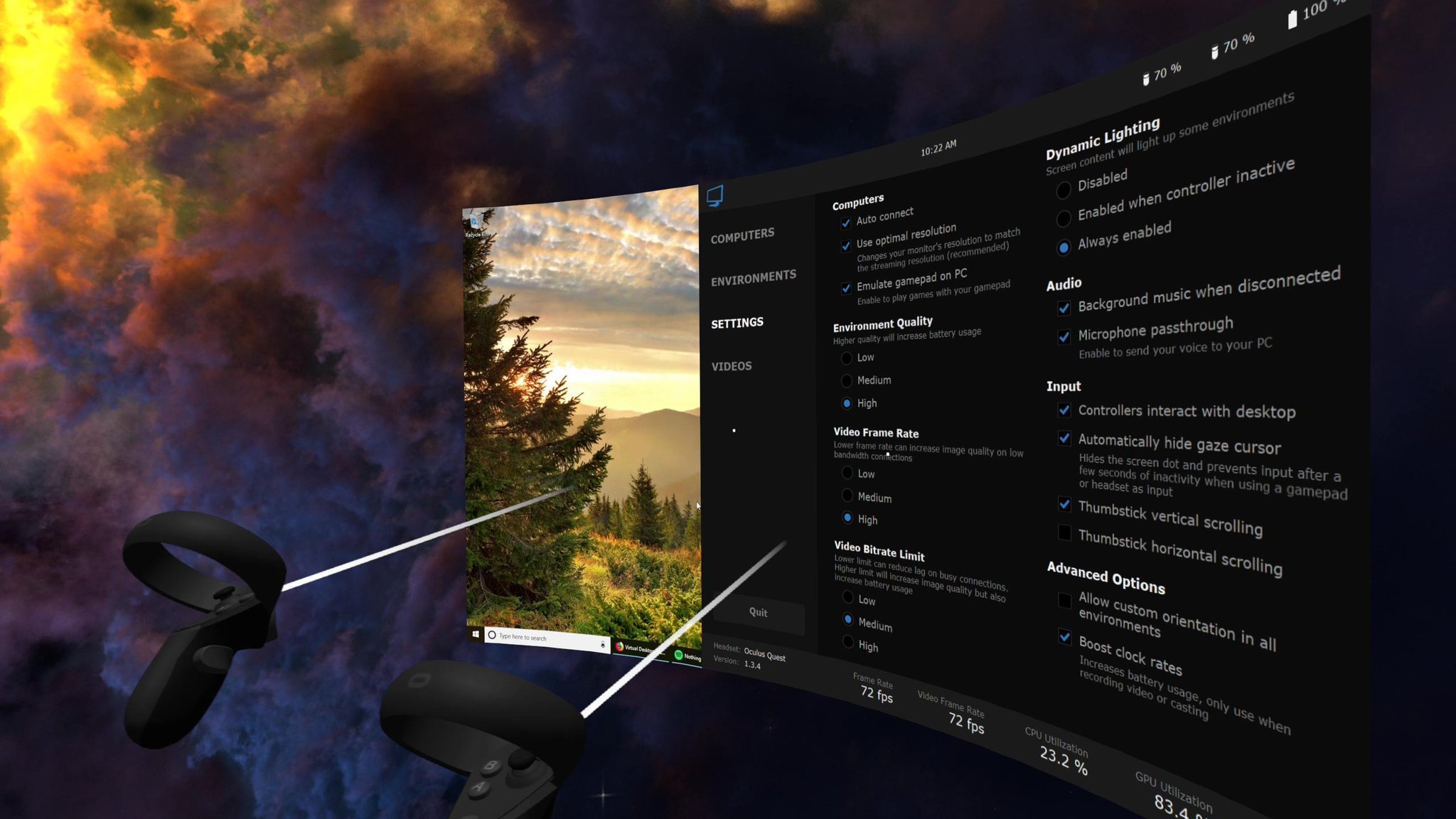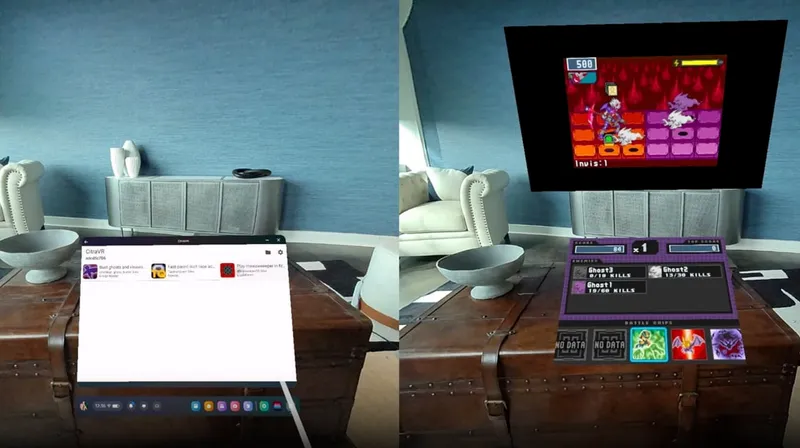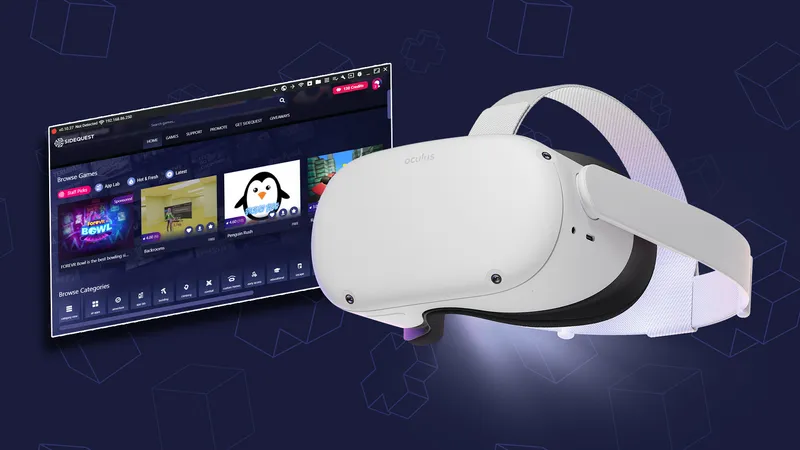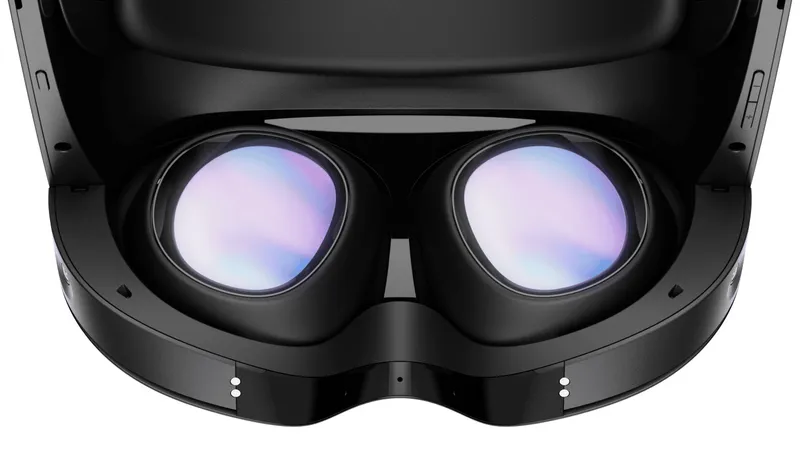A new unofficial workaround allows users to enable 90Hz mode for games and apps on Oculus Quest 2, despite the feature being disabled at launch.
One of Oculus Quest 2‘s biggest features is its increased refresh rate, with the ability to run content at 90Hz over the original Quest’s 72Hz. However, the feature is not available just yet — at launch, Quest 2 can only run at 90Hz for the home environment and Oculus Browser, when enabled in the experimental features section of settings.
No other Quest games or apps are officially able to run at 90Hz at launch. However, users have discovered that it can be enabled through ADB commands, allowing Quest 2 owners to play many games at a higher 90Hz refresh rate.
Update: Sideloading tool SideQuest also added a feature that makes it even easier to activate 90Hz mode. We have updated the guide to reflect this easier method.
The process was first outlined by an Ready at Dawn developer in the Echo Games community Discord looking for people to test 90Hz mode on Echo Arena. It has since been posted to r/OculusQuest by a player from the community. However, as may other Redditors have pointed out, the process of enabling 90Hz is not exclusive to Echo Arena, and should work for many other games as well. The method has also been confirmed by Virtual Desktop developer Guy Godin on Reddit.
Many Quest developers have proactively updated their apps to make them ’90Hz-ready’, such as Echo Arena, Superhot and Virtual Desktop. This ensures that the apps will be able officially run at the higher refresh rate as soon as the feature is officially enabled.
However, not all apps have been this proactive and so the instructions below may not work for an app that has yet to update their app in preparation of the official 90Hz release. Let us know which apps work for you in the comments below.
What You Need
You’ll need an Oculus Quest 2 — to our best knowledge, this method will not work on the original Quest.
Make sure you also have a USB cord to connect the Quest to your computer — any USB A to C cord (or C to C, if your computer supports it) should work.
Running Games At 90Hz On Quest 2
If you’ve never sideloaded anything onto your Quest 2 before, there are a few first-time setup steps that you need to do before enabling 90Hz. Check out our article on sideloading on Quest and follow all the instructions in the ‘Initial Setup’ section — enable developer mode, installing SideQuest and enabling debugging between your computer and Quest 2.
Once that’s all sorted, here’s how you enable 90Hz for apps:
1. Open SideQuest
2. Connect your Quest to your PC via the USB cord and confirm the headset is connected to SideQuest
3. Press the ‘Device Settings & Tools’ button, represented by a spanner, in the top right of the SideQuest toolbar
4. Click the 90Hz button under ‘Refresh Rate’, pictured below.
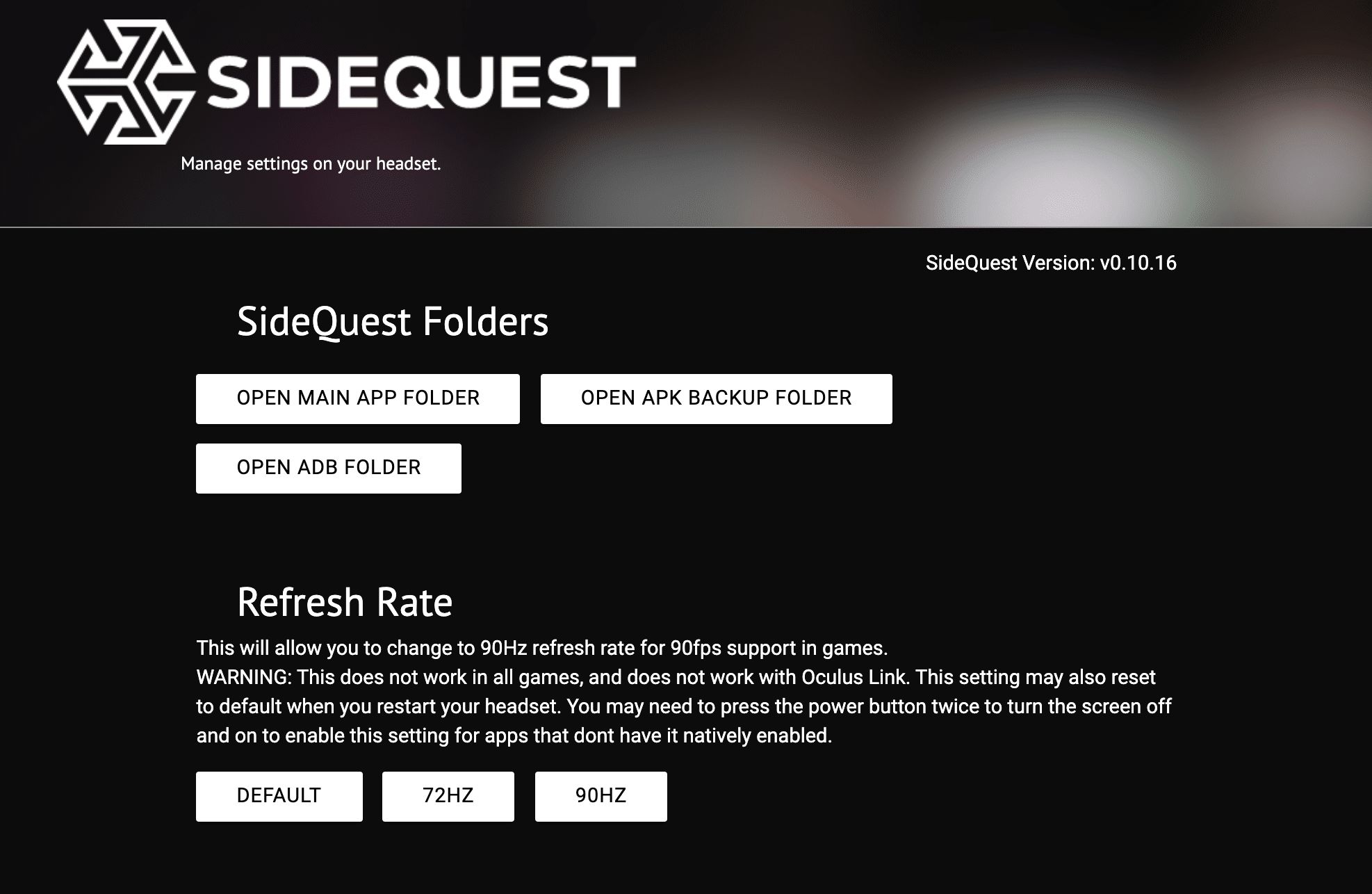
5. Press the power button on the Quest once to turn the screen off, then once more to turn it back on.
Games should now be running at a higher 90Hz refresh rate — we tested and confirmed that it works at a stable 90fps for both Echo VR and Beat Saber.
However, generally speaking, this may be dependent on whether an app is already ’90Hz-Ready’ or not. Upping the refresh rate to 90Hz did not seem to have a positive impact on Solaris: Offworld Combat, for example, and if anything may have caused more variability in its performance.
If you turn the headset off and on again, it will revert to 72Hz and you will have to go back to SideQuest and press the 90Hz button again.
You can disable 90Hz by repeating the process above but pressing the Default of 72Hz buttons instead.
Manual ADB Command Method
Before SideQuest implemented the 90Hz setting, which simplified the process, this was the original method which uses ADB commands:
1. Open SideQuest
2. Connect your Quest to your PC via the USB cord and confirm the headset is connected to SideQuest
3. Press the ‘Run ADB Commands’ button in the top right of the SideQuest toolbar, then select the ‘Custom Command’ option
4. Paste and run the following command:
adb shell setprop debug.oculus.refreshRate 90
5. Press the power button on the Quest once to turn the screen off, then once more to turn it back on.
Alternatively, you can disable 90Hz and go back to the standard 72Hz by running this command:
adb shell setprop debug.oculus.refreshRate 72
Checking 90Hz Status
If you want to check whether a game is running at 72 or 90Hz, you can use the following ADB command (however you may need to use command line, not SideQuest, for this):
adb logcat -s VrAPI
You could also use the official OVR Metrics tool as well, which runs as an overlay on your headset.
Given its unofficial nature, you might have mixed results with which games will run at 90Hz using the method above. Let us know what works for you in the comments below.
Virtual Desktop
Virtual Desktop is one of the apps that is already ’90Hz-ready’ and so should work with the method above.
However, not only does this enable 90Hz on the app, but it also means you can wirelessly stream PC VR games from a VR-ready PC at 90Hz as well, if you have the alternate version of the app instead from SideQuest. For more information on how to stream PC VR games to Quest using Virtual Desktop, check out this guide.
Did this method work for you? Which games did you play at 90Hz? Let us know in the comments.

